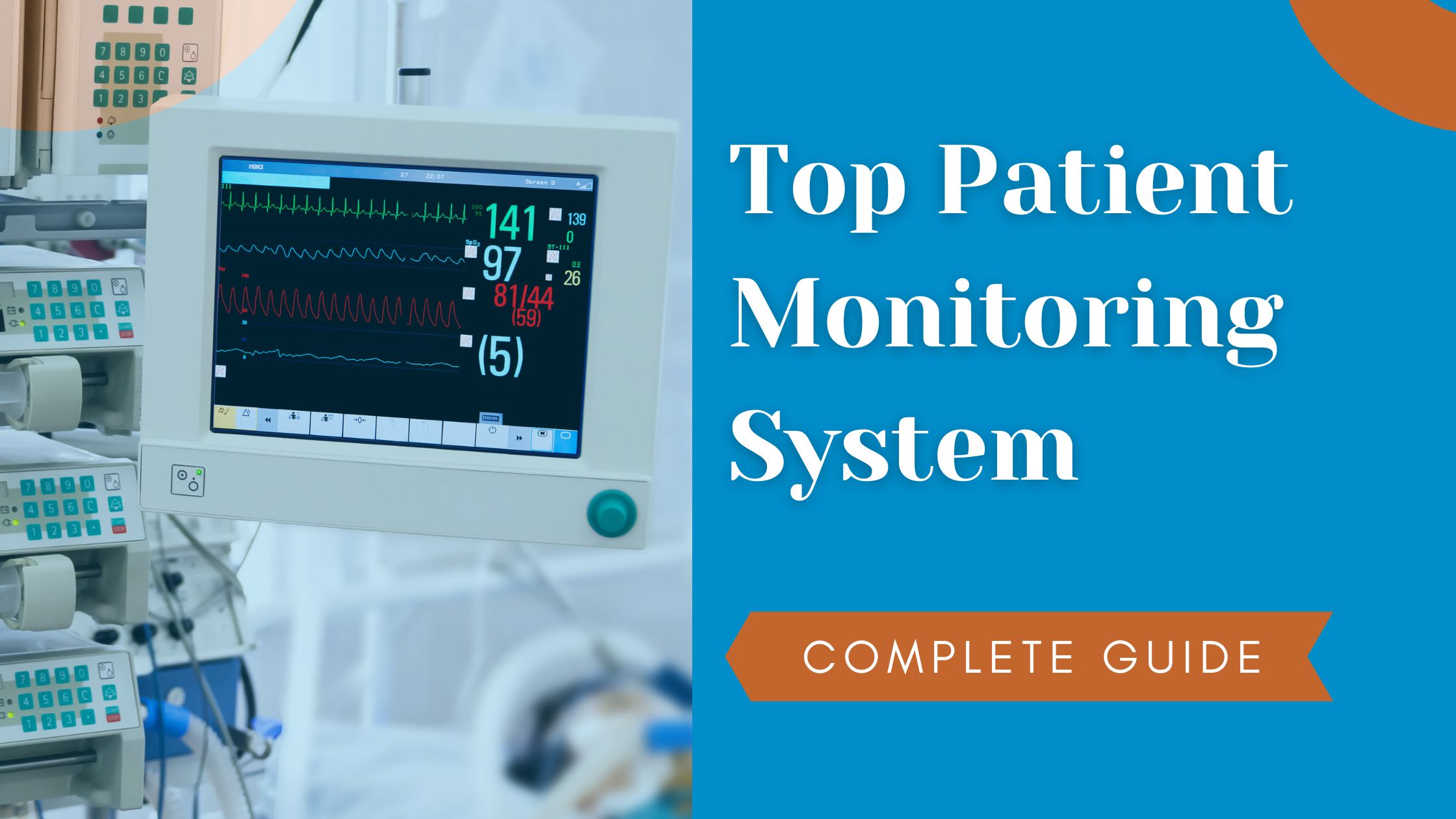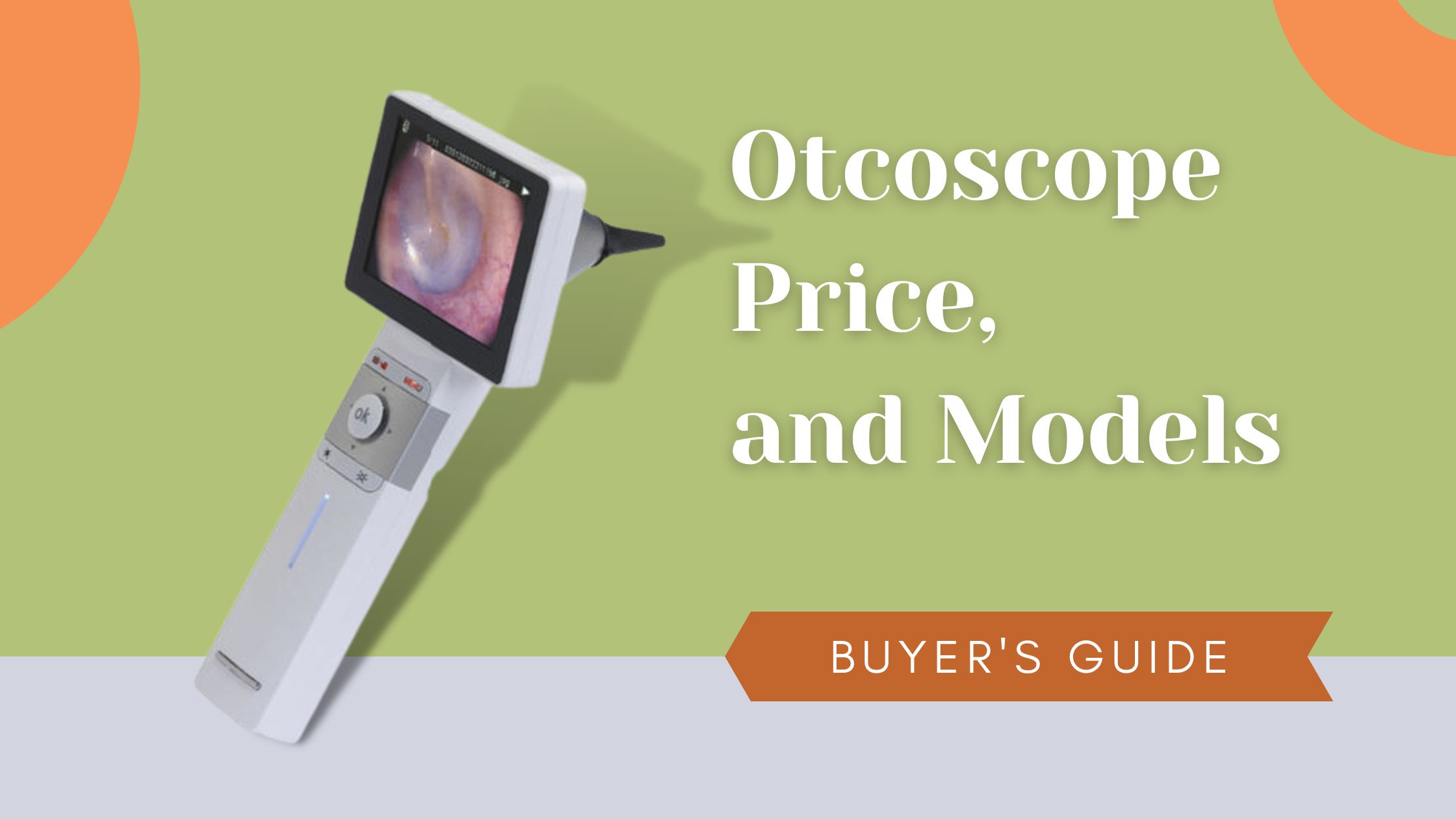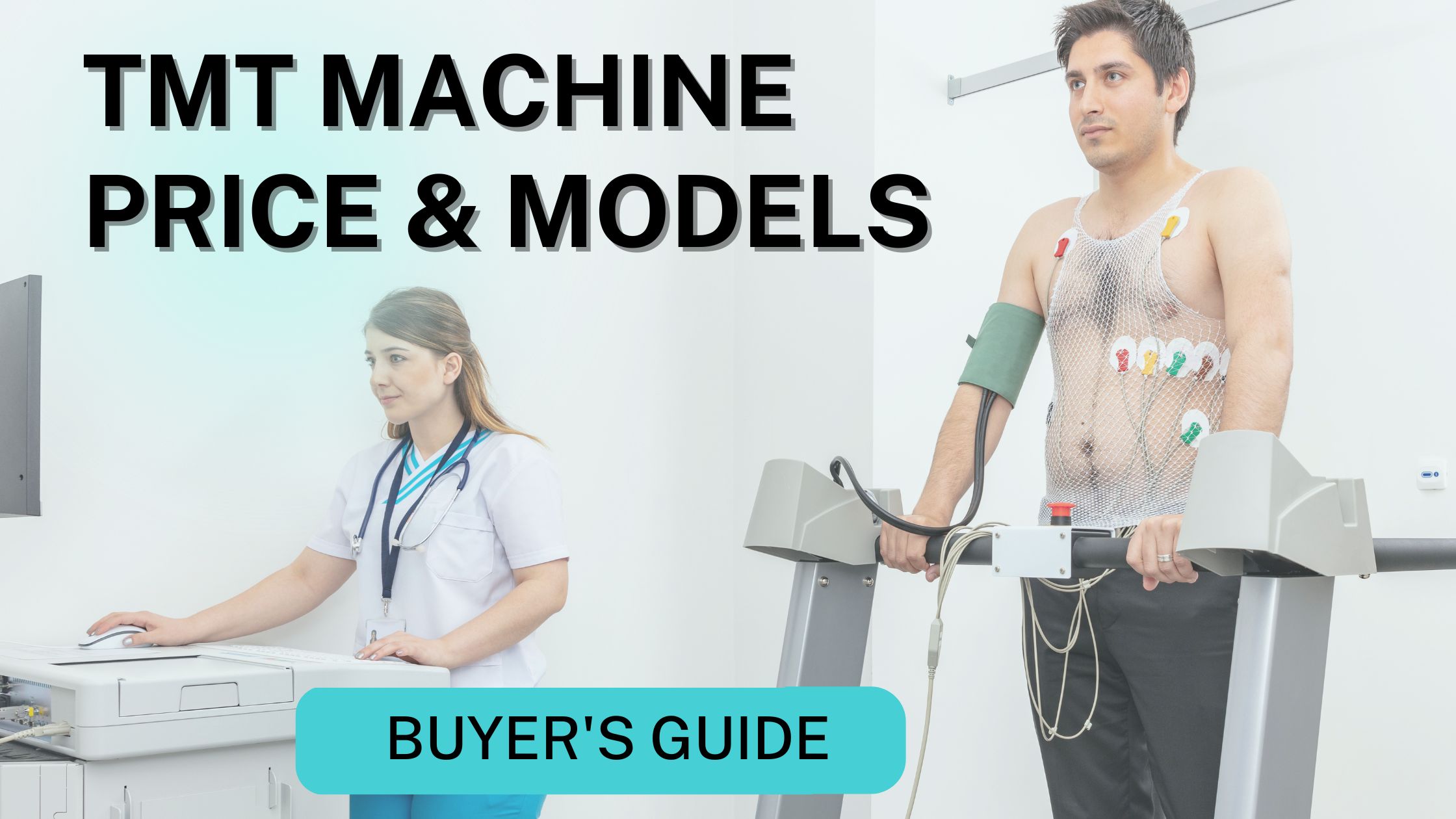What is a Laryngoscope?
Laryngoscopy is the endoscopy of the larynx part of a throat Sometimes, your doctor needs to use a small device to look at the throat and larynx, or a voice box. That procedure is called laryngoscopy.
It is a medical procedure used to obtain a view of the vocal folds and glottis.
- What is a Laryngoscope?
- what are the uses of layrngoscopes?
- Types of laryngoscope
- What is a Macintosh, Miller and Magill Laryngoscope?
- Demo Video of Laryngoscope
- Video Laryngoscope price in India?
- What is laryngoscope intubation?
- What are Mccoy, Bullard and pediatric laryngoscopes?
- Pros and Cons of Video Laryngoscopy of ASCs
- 5 Best Laryngoscope models in India
- Demo Video of video laryngoscope
- Demo Video of Ambu king vision video laryngoscopy with two disposable blades
- Demo Video of Nicomed Medical Video Laryngoscope
- Demo Video of Anaesthesia Video Laryngoscope with 8 Inch Monitor
- Demo Video of Portable reusable Video Laryngoscope from HugeMed CE and FDA Approved for ICU, OT & emergency applications
- Things to consider before investing in laryngoscopy
- Final Thoughts
- FAQs
what are the uses of layrngoscopes?
The doctor uses the laryngoscope to check your sore throat, and won’t go away or diagnose any ongoing issues like bad breath, coughing and hoarseness.
The other uses of laryngoscopes are;
- You are coughing up with the blood
- You face difficulty swallowing and breathing
- You feel something stuck inside your throat
- You have an earache, that is difficult to go away
- You have laryngitis, acute and chronic laryngitis
- You have chronicles hoarseness
- You have long-term effects of chronic cough
- You have throat pain that isn’t easy to go away
- You have bad breath that doesn’t go
- Your doctor examines something it can be related to more serious like cancer
- Your doctor has to remove the growth
- You could be a mass in your neck and area of the head it is a sign of cancer
- You have smoke and long-lasting respiratory problem
- You have the voice problem long-lasting over the three weeks, weak voice, raspy voice or no voice
Your doctor has been performing the direct larynx to the
- Can remove something that is blocking your airway it can be swallowed coin or marble
- Help to remove the tissue sample into the throat to examine more closely under the microscope
Types of laryngoscope
There are many types of laryngoscope flexible laryngoscopy procedures containing;
- Indirect Laryngoscopy
Indirect laryngoscopy is the easy way to use the light and tiny little mirror to see into your throat. The mirror is linked to the long handle like the dentist continually used, and they placed it against the wall of your mouth. After that, they shine the light into the mouth to see the image in the mirror. The whole procedure is completely done in the doctor’s clinic.
The doctor said to sit in a chair during the performance task, the doctor may spray something into your throat to numb it and start the procedures.
- The Direct Fiber-Optic Laryngoscopy
Many doctors do this type sometimes, it’s referred to as a flexible laryngoscopy for doing this your doctor uses a little telescope which is at the end of the cable and goes into your nose then into your throat.
It is the quickest process, you will receive a numbing agent in your nose. In some embodiments, doctors may use a decongestant to open the nasal passages. It is commonly gagged with this procedure.
- Direct Laryngoscopy
Direct laryngoscopy is the ample effective type in that the doctor uses the laryngoscopy for pushing your tongue down and lifting your epiglottis. Your epiglottis is a cartilage flap and covers your windpipe. You breathe it open and you swallow it closed!
The doctors used this procedure to remove sample tissues of testing and remove small growths, they also use it to insert a tube into the trachea to help you breathe during the surgery and emergency.
This procedure takes a longer time than others. It will give you common anaesthesia so that you won’t awake during the whole procedure.
What is a Macintosh, Miller and Magill Laryngoscope?
The Macintosh Laryngoscope has curved blades that allow exposure to the larynx by positioning the tip in the vallecula. It is anterior to the epiglottis, lifting it out of the view.
The Miller Laryngoscope is a straight blade designed to obtain the view of the vocal cords by directly lifting the epiglottis. This is a useful application in the floppy airways making it prominent within paediatric anaesthesia, this miller laryngoscope is the most commonly used blade of today.
The Magill Laryngoscope is used to see the larynx (voice box), opening to the trachea and the lungs. The Magill blade is shaped like a tongue depressor and sees through the placing tube.
Demo Video of Laryngoscope
Video Laryngoscope price in India?
There are two main types of video laryngoscope;
- Cart based- the video screen is to the off to the left on the separate screen.
- Handheld- the video screen is on and the device also itself!
The price range of INR 74,538 to 11,18,082 for the video laryngoscope comparison to around INR 1,341 apiece for the single-use. Disposable laryngoscope. If you go buy in a lump, you may be able to cut the cost of the total purchase.
What is laryngoscope intubation?
The laryngoscope is designed to be visualized for the vocal cord and placement for the ETT into the trachea under direct vision.
What are Mccoy, Bullard and pediatric laryngoscopes?
The Mccoy blades submit the clinical examinations with huge flexibility and expand control in broad selection in difficult intubation cases, forward expulsion of the larynx. Forward and prominent upper teeth. Reversed displacements of the tongue and decreased neck movement.
The Bullard Laryngoscope utilizes an exact fiberoptic laryngoscope designed for patients who are difficult to intubate. It is uncertain to target the access area, such as the glottis, without considering the efforts, distortion and internal anatomy of the patient.
The Pediatric laryngoscope: The doctor uses the flexible laryngoscope, a fragile and adaptable instrument lights and magnifies images for better seeing for the larynx and vocal cords. Often the doctor gave in their clinic after giving the child numbing medicine. And sometimes, it needs to be done in the operating room.
Pros and Cons of Video Laryngoscopy of ASCs
Pros
- It increases the patient base
- It improved the success rate
- Lower trauma of all the patients
- It has a short learning curve
- The accession cost is reasonable
Cons
- The whole setup is expensive
- All maintenance is expensive and time-consuming
- It is dangerous, to describe the standard of care
- It requires less force but no evidence that it does
5 Best Laryngoscope models in India
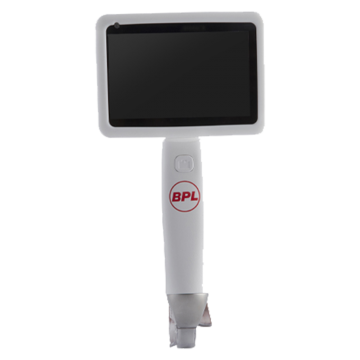
1) BPL video laryngoscope
- It has a CMOS camera with an LCD screen, high definition anti-fog lenses and high peak performance visualization
- High Resolution 4 inch LCD screen design to maximise visibility
- Antimicrobial ergonomic design reusable handle to assist in clinically
- Video and images can be transferred through a micro USB port for easy storage and permit
- Rechargeable lithium-ion battery with the 24-hour battery
- The 4GB built memory for continuity video recording and image capturing with the use of button
BPL video laryngoscopy is a new age of compact portable and lightweight for the fastest and productive intubation. It has 4 inches LCD screen and CMOS camera and choices of three sizes are of blades.
Demo Video of video laryngoscope
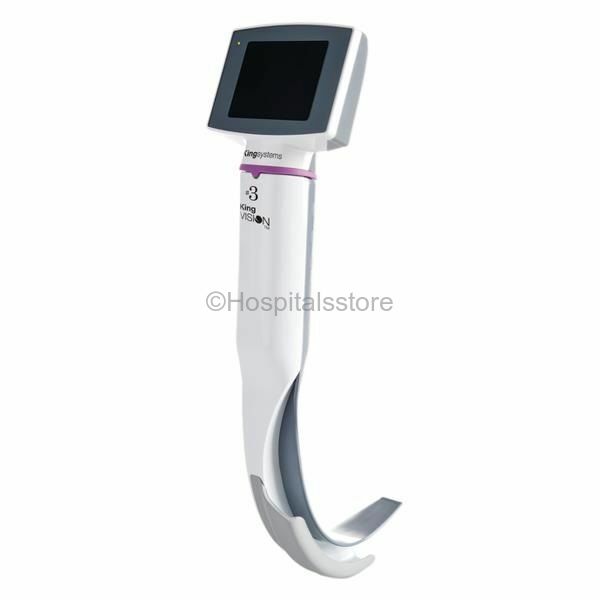
2) Ambu king vision video laryngoscopy with two disposable blades
- Reusable full-colour TFT LCD 2.4
- The 3 AAA batteries, battery life is 90 minutes
- Reusable video adapter with the camera and white LED light
- The Disposable Challenged and non-challenged blades
- Custom video out cable (2.75m/9′)
- The ET tube size of incapacitated blades a Blade™ 2C: 4.5-5.5 mm, blade 3C: 6.0-8.0 mm
This King video laryngoscopy provides high-quality images and videos of the vocal cords during minimising the soft tissue manipulation. King vision is designing for the primary tool for intubation high-quality, made in America. The display comes with one year warranty, full-colour, smudge-proof, non-glare display, light-weight, self-contained and battery operated. Blades are manually packed while making the king vision portable.
Demo Video of Ambu king vision video laryngoscopy with two disposable blades

3) Nicomed Medical Video Laryngoscope
- 2.0M pixels camera, full-view high resolution monitor.
- Ergonomic durable design,easy to operate
- Utilize 316 medical stainless material , blade can be sterilized under high temperature and pressure or through anti-microbial soaking.
- The devices presents state-of-the-art technique at an affordable price.
The HugeMed Video Laryngoscope adopts state-of-the-art technique, possesses the advantage of 2.0M pixels full-view camera, high-resolution monitor unique anti-fog capability (no need to wait for preheating), long with portable ergonomic design, enabling clinicians to improve their chances of first-attempt accomplishment while minimizing the injury chance may occur during the intubation process by getting a better view of the glottis structure.
Demo Video of Nicomed Medical Video Laryngoscope
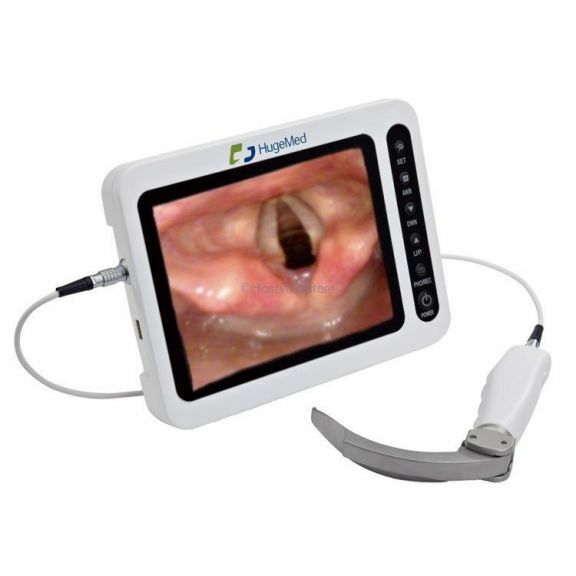
4) Anaesthesia Video Laryngoscope with 8 Inch Monitor
- Model NO.:VLM
- Display:8″
- Resolution:640*480(RGB),2M Piexel High Resolution
- Uploading:Upload picture and Video by USB Port
- Illumination:6 LED lights
- Battery Type:Rechargeable Lithium Battery,Lifetime : Over 3Years
- Long Working Time:2Hrs Continuous Working Time
- Voltage:3.7V
- Capacity:3200mAh
- Charging Times&Time:More than 300 Times;Less than 8H
- Transport Package:Standard Export Package
Demo Video of Anaesthesia Video Laryngoscope with 8 Inch Monitor
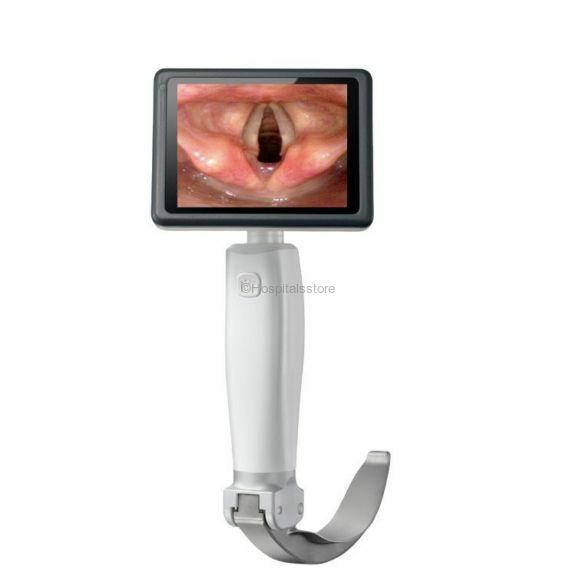
5) Portable reusable Video Laryngoscope from HugeMed CE and FDA Approved for ICU, OT & emergency applications
- Ergonomic durable design, easy to operate
- Utilize 316 medical stainless material, the blade can be sterilized under high temperature and pressure or through anti-microbial soaking.
- The devices present state-of-the-art techniques at an affordable price.
- Long battery life
- Display size: 3.5″Full View
- Monitor: LCD
- Resolution: 640*480 RGB
- Image Output: Connect to an external monitor and convenient for training and presentation.
- Battery Type: Rechargeable Lithium Battery
- lifetime : 3 years or more
- Long working time: ≥200minutes
- Unique Anti-fog Function: Get anti-fog function upon powering without preheating
- Camera Function: Get serial camera shooting by pressing the button on the handle for training and presenting.
- Handle: Comfortable ergonomic short handle design
HugeMed Video laryngoscope adopts state-of-the-art technique , possesses the advantage of 2.0M pixels full-view camera, high-resolution monitor , unique anti-fog capability (no need to wait for preheating), long with portable ergonomic design, enabling clinicians to improve their chances of first-attempt success while minimizing the injury chance may occur during the intubation process by getting a better view of the glottis structure.
Demo Video of Portable reusable Video Laryngoscope from HugeMed CE and FDA Approved for ICU, OT & emergency applications
Things to consider before investing in laryngoscopy
Let’s take a peek at the several factors to consider while evaluating these useful potentially life-saving devices.
- The Reliability of the device trailed the video laryngoscopy produces the frizzy and shimmering images, batteries expired without the warning and also light isn’t bright enough. The anaesthesia providers feel confident those devices are comfortable enough they increase intubation with patients and success safely.
- The Ease of using a low-slope learning curve is key because the provider did not use that device every day. When it is picked up they face a lot of struggling how to use it if, not know the proper instructions. If they are purchasing the anaesthesia providers they should be properly trained and comfortable to use them.
- A video laryngoscopy must be clear video and images, the camera lens mustn’t dim difficult intubation, not the best time to discover with the device you purchased dim up or produced decipher videos and images.
- The power of intubation, whichever you choose between disposable or rechargeable batteries, make sure to look for a video laryngoscopy that informs your provider at all times.
- Blade type the two options are available reusable or disposable, the benefit of disposable blade popping off a handle or breaking, and no difference in usability. The benefit of disposable is that you need to worry about cleaning. Reusable blades are expensive also, the lifespan of the reusable is short or long? You don’t need to worry about these factors with disposable.
- Screen size the view of videos and images you can see the airway more clearly. The video laryngoscopy is not only the large Remember, but the portable also is not nearly important in or AS it is an ER and ICU. On other hand, the smaller your screen the more strain your eyes.
- Data capture is good to capture all the data into the device and save them either to onboard memory or USB device. Then you can give the recording to the patient whenever it is needed.
Final Thoughts
Before, investing in any laryngoscopy you must know all features and specifications of the device the view of video and images must be clear while using this device. Make sure, do all procedures under the guidance of your doctor and clinical.
FAQs
What is the difference between direct and flexible laryngoscopy?
The Direct laryngoscopy lets your doctor see deeper into your throat. The scope is either flexible or rigid. Flexible scopes show the throat better and are more comfortable for you. Rigid scopes are often used in surgery.
What are the types of laryngoscopy?
The three types of laryngoscopy are:
- indirect laryngoscopy.
- fiber-optic (flexible) laryngoscopy.
- direct laryngoscopy.
What is a flexible laryngoscopy?
The Flexible laryngoscopy is a test that lets your doctor look at your throat and voice box (larynx). The doctor uses a thin, flexible tube, called a scope, to look deep into your throat.
Does a flexible laryngoscopy hurt?
The Direct flexible laryngoscopy
But it should not hurt. You will still be able to breathe. If a spray anaesthetic is used, it may taste bitter. The anaesthetic can also make you feel like your throat is swollen.
What is the difference between endoscopy and laryngoscopy?
In particular, a laryngoscopy is an endoscopy that allows visualization of the larynx and pharynx, which are parts of the throat. A laryngoscopy may be combined with a biopsy in order to obtain a definitive diagnosis of a suspicious growth in the throat.
Does endoscopy check neck?
Endoscopy. An endoscopy allows the doctor to see inside the body with a thin, lighted, flexible tube called an endoscope. The person may be sedated as the tube is gently inserted through the nose into the throat and down the esophagus to examine inside the head and neck.
What is the purpose of laryngoscope?
Your doctor uses a laryngoscope to push down your tongue and lift up the epiglottis. That’s the flap of cartilage that covers your windpipe. It opens during breathing and closes during swallowing. Your doctor can do this to remove small growths or samples of tissue for testing.

